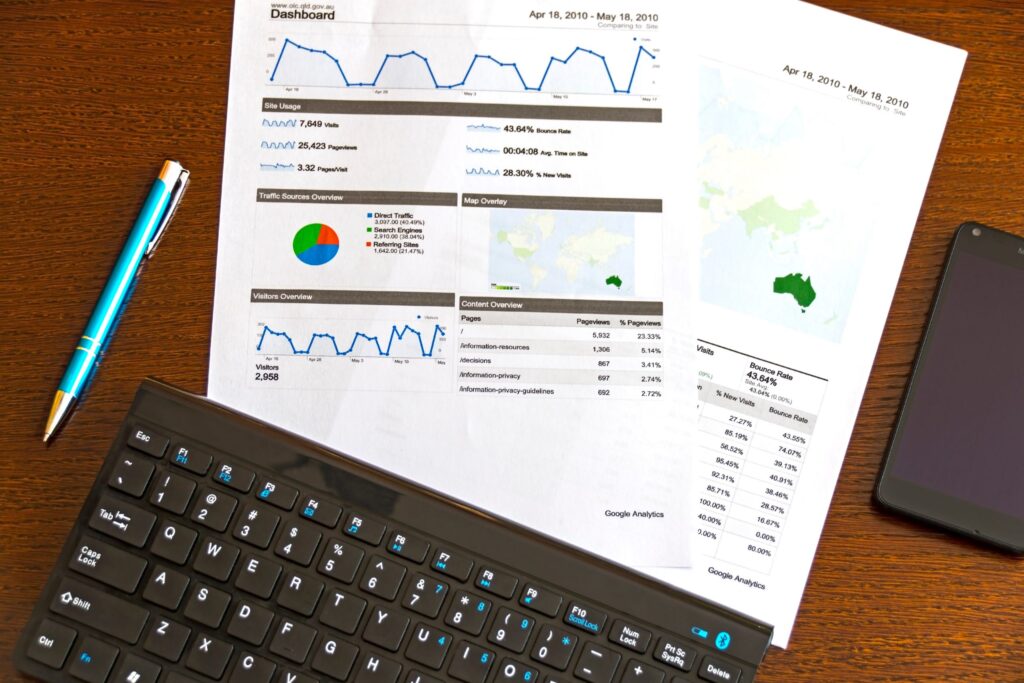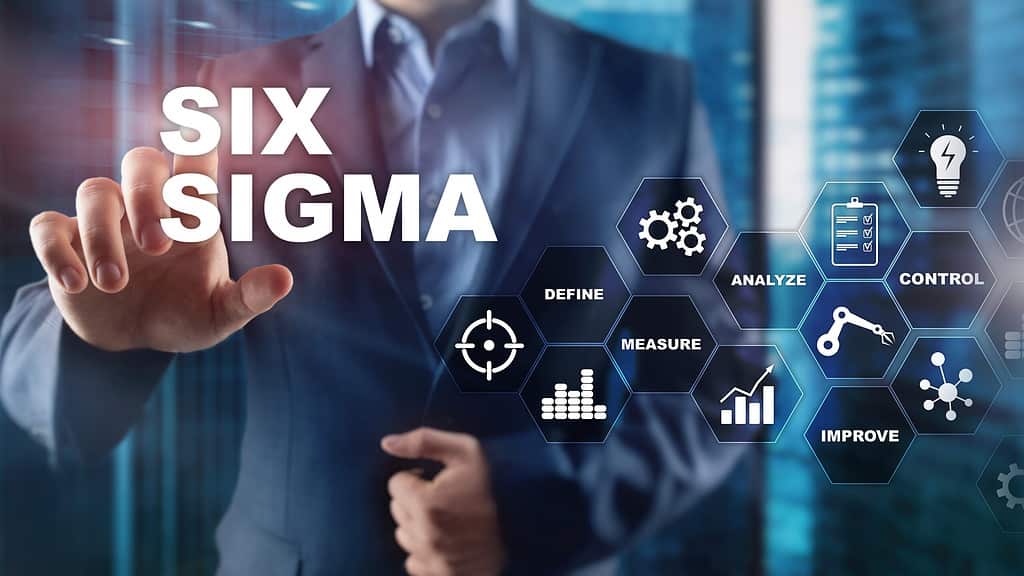Category: Methodology

PDSA vs. PDCA: What’s the Difference?
Published:What is PDSA? PDSA stands for Plan, Do, Study, and Act. It is a method that is used to test a change that is being implemented or has been implemented. Working through these four steps guides thinking into breaking down a task into sections and then evaluating the result, making improvements, and then […]
Read more »
Visual Management Boards: Seeing Progress and Success
Published:Visual Management Boards played a critical role in enabling this company to link and visually display critical metrics, KPIs, and actions simply and consistently. So, what are Visual Management Boards? Today, we’re exploring how these visualization tools can let your company reach new heights. While the company is fictional, the results speak for […]
Read more »
PDCA vs. DMAIC: What’s the Difference?
Published:What are the differences between PDCA and DMAIC? There is no shortage of jargon and acronyms to keep track of within the Six Sigma methodology. However, the two methods we’re looking at today blur the lines substantially. So, let’s jump in and see exactly how these approaches differentiate themselves. What is PDCA? Plan […]
Read more »
Accuracy vs. Repeatability: What’s the Difference?
Published:What Is Accuracy? Accuracy is the difference between a measured value compared to its true value. Since no measurement can be 100% exact, there needs to be a degree of inaccuracy allowed in the measurement. This degree of inaccuracy depends on the amount of error you can accept and is denoted by a […]
Read more »
How Cost Modeling Can Help Improve Your Bottom Line
Published:Cost models provide a wealth of vital information about the overall state of a business as well as details of specific operations, which makes them a powerful tool for any streamlining agenda.
Read more »
Value Added vs. Non-Value Added: What’s the Difference?
Published:What is Value Added? The most important thing to understand about value concepts is that they always revolve around the customer. Customers are the ones who set the standard for value, which means it’s based on whether the customer believes the product or service will address their specific needs. Increasing appeal by adding […]
Read more »
Exit Criteria vs. Acceptance Criteria: What’s the Difference?
Published:What Are the Exit Criteria? Exit criteria are conditions that must be met before closing out one project stage and advancing to the next stage. When project management teams use exit criteria, they break down the project into multiple steps. Therefore, each stage will have its own set of conditions (exit criteria) that […]
Read more »
Understanding Six Sigma: Definition, Benefits, and Best Practices
Published:Six Sigma has been defined in three ways: as a metric, a methodology, and a philosophy. Sigma can be defined as the standard deviation of a set of continuous data, so Six Sigma would then be six standard deviations.
Read more »
Standard Operating Procedure vs. Work Instruction: What’s the Difference?
Published:How do you choose between a standard operating procedure and work instructions? When you’re onboarding employees, it helps to have the right sort of documentation in place. Today, we’re looking at the differences between both of these concepts and where they apply within your organization. What is Standard Operating Procedure? Most established companies […]
Read more »
Customer Journey Map vs. Process Map: What’s the Difference?
Published:What Is a Customer Journey Map? A customer journey map is a diagram that visually represents the various steps a customer goes through in engagement with your company. This can be with a product, service, online and in-person interaction, or a combination. The Benefits of a Customer Journey Map A customer journey map […]
Read more »
Voice of the Process vs. Voice of the Customer: What’s the Difference?
Updated:Voice of the Process vs. Voice of the Customer isn’t a debate necessarily. In Six Sigma, many voices communicate concepts, ideas, and progress that any organization should pay attention to. Some, like VOP, can inform you of the progress of a process. However, others like VOC, serve as a beacon into the minds of your […]
Read more »
Repeatability vs. Precision: What’s the Difference?
Published:Repeatability vs. precision, how do they apply to your workflow? Six Sigma is filled with different tools, terms, and methodologies applied across the production line. Today, we’re looking at two core concepts that deal with the accuracy of your processes. What Is Repeatability? Repeatability is the typical variation that occurs when a person […]
Read more »
Lead Time vs. Cycle Time: What’s the Difference?
Published:Lead time vs. cycle time, which do you choose? Improving your processes is a nuanced and complicated thing. Understanding the difference between the various measurements of time can only benefit your workflow. So, let’s dive into what this means and how it applies to your production. What is Lead Time? Lead time is […]
Read more »
Out of Control Action Plan: Correcting Process Variants for Optimal Performance
Updated:Out-of-control Action Plans (OCAPS) are a piece of the Lean Six Sigma methodology that is often overlooked. Though they have been phased out in some organizations, it is important to understand their purpose and how they can help a company improve its processes.
Read more »
Tangible vs. Intangible Benefits: What’s the Difference?
Published:Do you know the difference between tangible vs. intangible benefits? Measuring the results of your company’s output can be of vital importance. Understanding how these two measurements line up and differ from one another can help refine productivity. Additionally, failing to pay attention to these measurements could have serious ramifications. What Are Tangible […]
Read more »
Null Hypothesis vs. Hypothesis: What’s the Difference?
Updated:Null hypothesis vs. hypothesis, which is the right choice? When you get into the different methods of analyzing data, there is no shortage of tools at your disposal. Understanding the difference between a null hypothesis and a hypothesis can make or break your testing and analysis stages. Let’s dive into both of these tools and […]
Read more »
Flowchart vs. Process Map: What’s the Difference?
Published:Flowchart vs. process map, what do you choose to use? When it comes to mapping out a project, you’ve got several choices on how to visualize them. If you’ve had trouble deciding on a format for your visualization, then read on. Today’s guide is meant to cast more light on these individual tools […]
Read more »
Value Stream Map vs. Process Map: What’s the Difference?
Published:Value stream map vs. process map, which is better for you? As with many tools and methods in Six Sigma, there isn’t a one-size-fits-all approach to mapping things out. Both of these tools have specific functions with some overlap. If you’re new to Six Sigma, then you’re in luck. Today, we’re going in-depth […]
Read more »
Repeatability vs. Reproducibility: What’s the Difference?
Updated:Repeatability vs. reproducibility, which should you use? Repeatability and reproducibility are two ways that scientists and engineers measure the precision of their experiments and measuring tools. They are heavily used in chemistry and engineering and are typically reported as standard deviations in scientific write-ups. While these two measurements are both used in many types of […]
Read more »
Use Multiple Process Improvement Methodologies to Strengthen Results
Updated:There are many process improvement methodologies – Six Sigma/DMAIC (Define, Measure, Analyze, Improve, Control), Lean, Design for Six Sigma (DFSS) and innovation to name merely a few. But with so many choices, it makes applying an improvement methodology difficult. There are questions such as: “What makes this toolset unique?” and “Which one should I be […]
Read more »
How Lean Six Sigma Practices Helped Amazon Web Services Achieve Operational Excellence
Updated:In today’s highly competitive business landscape, organizations are constantly seeking ways to improve their operations and deliver exceptional value to their customers. One such company that embarked on a transformative journey is Amazon Web Services (AWS), the cloud computing arm of Amazon. Facing significant challenges, AWS turned to Lean Six Sigma practices and tools to […]
Read more »
How Lean and Six Sigma Dramatically Improved InterConnect’s Kit Manufacturing Line
Updated:InterConnect Wiring was constantly needing to be ahead of schedule in assembling its aircraft kits, causing unneeded stress and an unbalanced workload. By utilizing Lean and Six Sigma concepts, the organization was able to make significant improvements to its processes. Despite already being a very successful organization, InterConnect Wiring was able to utilize Lean and […]
Read more »
Lean Six Sigma Transformation: Harnessing DMAIC to Enhance Operational Efficiency and Customer Satisfaction at Avon
Updated:Efficiency, Elegance, and Empowerment: Avon and Lean Six Sigma Unite In the bustling world of cosmetics, where beauty meets business, one name has stood the test of time, captivating hearts and empowering women for over a century: Avon. From its humble beginnings as a perfume company in the late 19th century to its global presence […]
Read more »
Black Belt vs. Master Black Belt in Six Sigma: What’s the Difference?
Published:What is a Black Belt (BB)? A Six Sigma Black Belt (BB) is a trained and certified professional who has achieved a high level of expertise and experience in the Six Sigma methodology. Six Sigma is a data-driven methodology and management philosophy that aims to improve the quality of processes, reduce defects, and minimize variability […]
Read more »